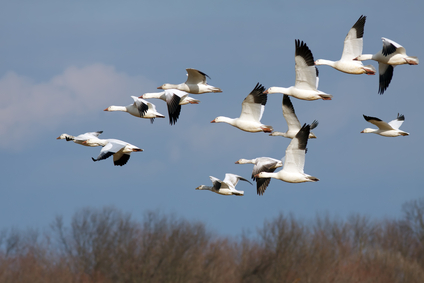Bird flu: chickens are coming home to roost

 The Dutch poultry industry has been hit by an outbreak of avian flu, which has been identified on several farms. But don’t blame migratory birds for the failures of the livestock industry, writes biologist and animal welfare campaigner Sjourd van de Wouw.
The Dutch poultry industry has been hit by an outbreak of avian flu, which has been identified on several farms. But don’t blame migratory birds for the failures of the livestock industry, writes biologist and animal welfare campaigner Sjourd van de Wouw.
In the last couple of days the government’s extermination service had its work cut out. Hundreds of thousands of chickens on contaminated chicken farms were gassed. The Dutch culling policy is a world-wide standard. As far afield as China delegations from the Dutch livestock industry are trying to flog this particular expertise. It’s a cynical by-product of the many diseases – bird flu, swine fever, Q fever and foot and mouth disease among them – which have plagued the Dutch livestock industry in the last decades.
Apart from clinging to this efficient culling process, the livestock industry also abides by dangerous and antiquated principles. It seems it has learned very little from earlier outbreaks. This is bad for the animals and, ultimately, bad for the industry itself.
Almost every farmer or farmers’ representative is singing from the same hymn sheet these days: it’s those dangerous migrating birds that are visiting the disease on a helpless industry. Chickens shouldn’t roam free, they say, although outbreaks occurred at six chicken farms in north west Europe where the animals were kept indoors. Scientists from the Royal Dutch Academy of Science (KNAW) are exasperated at the industry’s making scapegoats of migrating birds as there is no evidence whatsoever to support their claim.
Time bomb
And even if the evidence were there it would not exonerate the industry. Contamination and culls are a choice, not an inevitability. The sector and the government are consistently going for the wrong option.
The sector is sitting on a time bomb. There are some hundred million chickens in the Netherlands. No other country has so many chickens caged up on such a small surface. They are also concentrated in two neighbouring regions: the Peel and the Gelderse Vallei. In the words of an epidemiologist from Wageningen university: ‘The proximity between the farms and the number of chickens means an outbreak in one single farm would be the end of the whole valley. That is the problem.’ What we should do then is scale down the livestock industry.
Cows, chicken and pigs are vaccinated against a number of diseases but bird flu is not one of them. Vaccinations cost money. Some buyers don’t want meat from vaccinated animals and that, too, is money lost to the sector. On the other hand, the financial hardships caused by outbreaks are largely compensated by the government. All in all, it’s cheaper not to vaccinate the animals.
Health risks aside, culling on this scale is unacceptable to society. Pointing the finger at migrating birds, as the livestock industry and some politicians are doing, is ridiculous. It’s time the industry was organised in such a way as to make sure that a single virus doesn’t spell the end of thousands of animals, farms and possibly the entire sector.
Sjoerd van de Wouw is a biologist and campaigner at animal welfare organisation Wakker Dier
This opinion piece appeared earlier in the Volkskrant
Thank you for donating to DutchNews.nl.
We could not provide the Dutch News service, and keep it free of charge, without the generous support of our readers. Your donations allow us to report on issues you tell us matter, and provide you with a summary of the most important Dutch news each day.
Make a donation